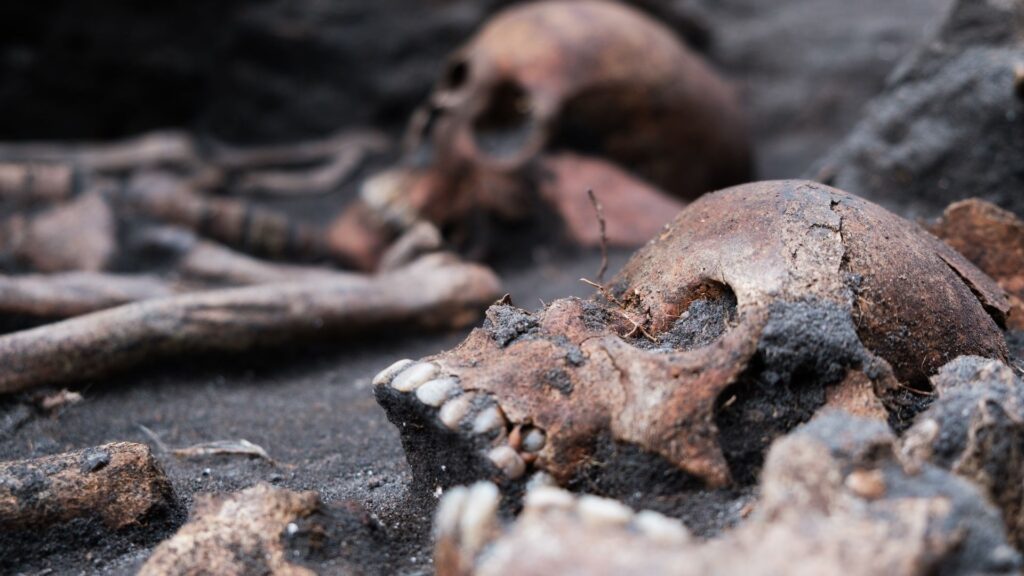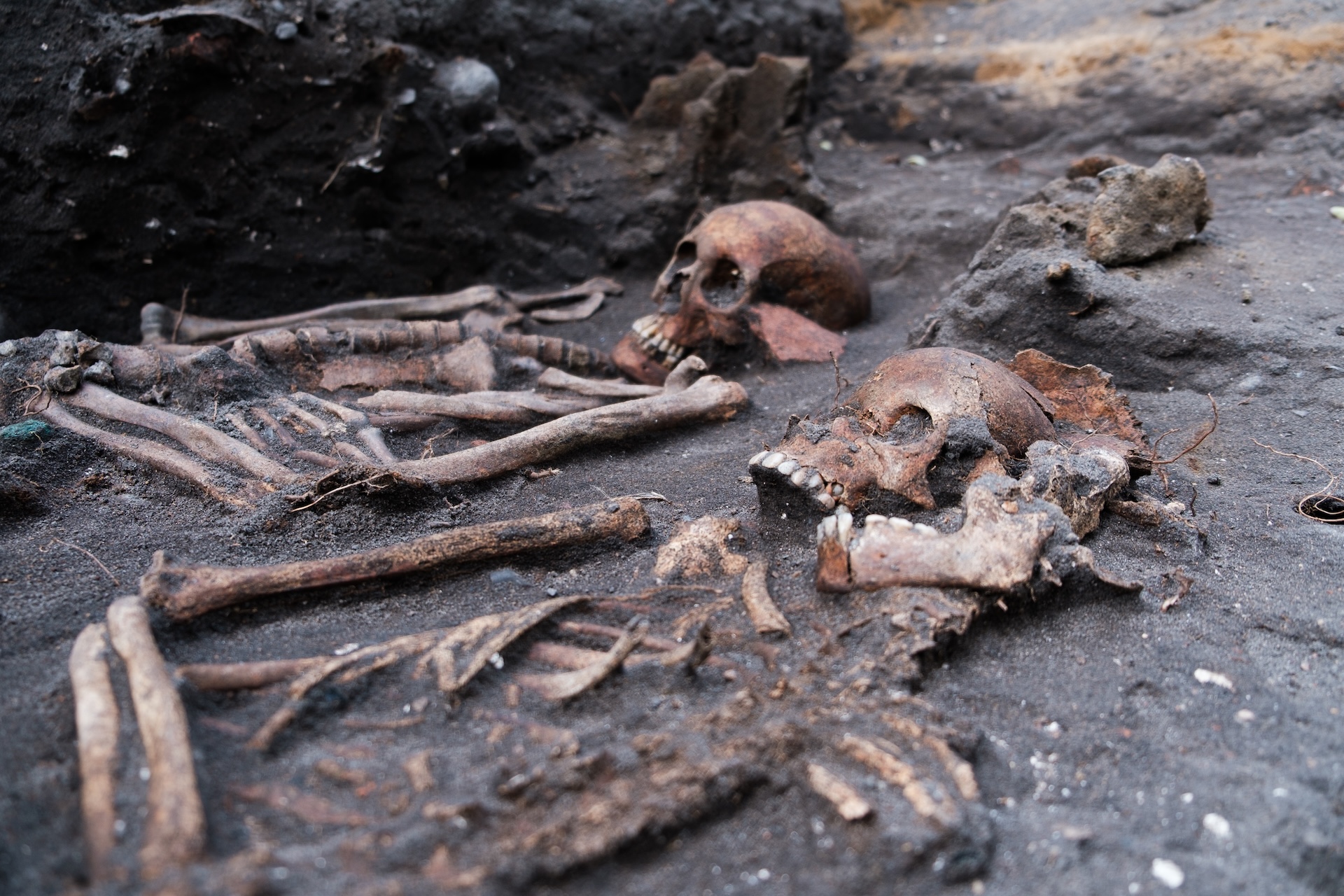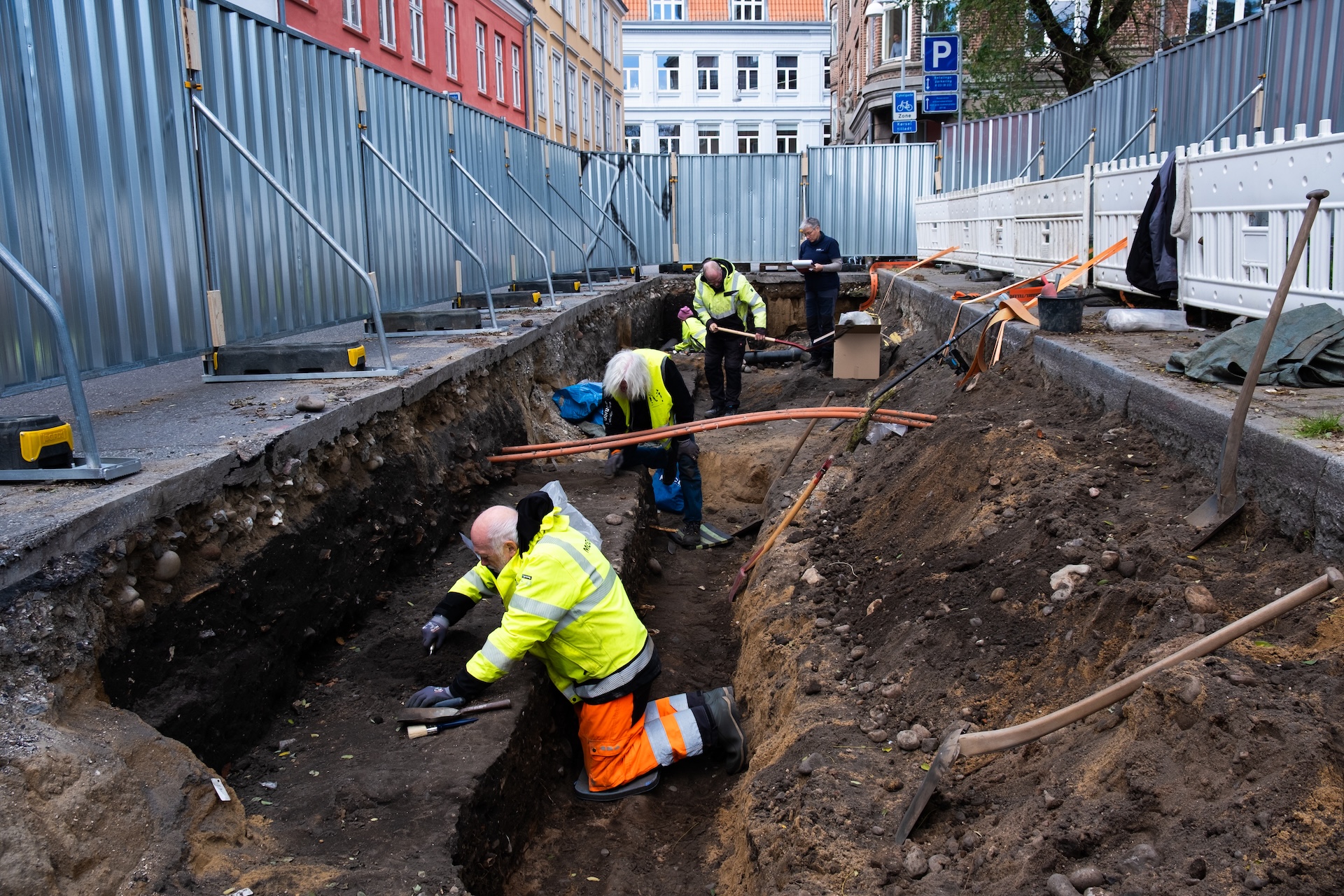While excavating a medieval Christian cemetery in the center of a Danish city, researchers unearthed 77 skeletons of people who were buried there about 900 years ago.
The excavations at the site of Sankt Olufs Kirke — Danish for St. Olaf’s Church — were conducted ahead of construction work at the site, near the center of the city of Aarhus on Denmark’s Jutland Peninsula.
A translated statement from the museum noted that “more than 50” skeletons had been found at the site, but Ravn said the final total for the dig, which ended Thursday (Oct. 30), was 77.
There were strong indications that the people buried at the site were Christians, although it is possible that some still harbored some Norse pagan beliefs, he said.
“The rare skeletons give us a unique opportunity to learn more about the lives, illnesses and beliefs of the first Aarhusians — and about the role of Christian cultural heritage in the city’s development,” Ravn said.
Choir collapse
The St. Olaf’s site is the oldest Christian site ever found in Aarhus, according to the statement. It shows Christianity flourishing there with the decline of Norse paganism and the end of the Viking Age in 1066, the statement said.
According to written sources from the time, St. Olaf’s Church in Aarhus was abandoned after its “choir” structure collapsed in 1548, during heavy winds on the Sunday before Ash Wednesday (“Shrove Sunday”).
But sources also relate that the church had been built in the 12th century and that it was named after the 11th-century Norwegian king Olav Haraldsson, who was born a pagan but became a Christian saint after his conversion, Ravn said.
Pagan cemeteries in Denmark were often several miles from their settlements, but Christians sought to be buried on the “sacred ground” of a church like St. Olaf’s, which in this case was near the center of a town, he said. In addition, Christian burials typically had very few grave goods, unlike the numerous grave goods often found in Viking Age burials.
The placement of the deceased also offered clues. The skeletons in the St. Olaf’s graves had been buried with their heads in the west and their feet to the east, Ravn said. This was a common orientation in early Christian burials, supposedly so the dead person could properly witness the Second Coming of Jesus Christ, which was expected to begin in the east — the direction of Jerusalem and the rising sun.
Lingering beliefs
It’s not clear from the newfound skeletons, but many people in Denmark at that time, despite being Christians, likely still held some Norse pagan beliefs, Ravn said.
“They probably would have been a bit opportunist,” he said, sometimes using Norse beliefs as a safeguard, perhaps by going to a local healer when they were sick.
Amulets in the shape known as “Thor’s hammer” — a protective symbol of the Norse god Thor — had sometimes been found in Norse Christian burials elsewhere, but not at the St. Olaf’s site, he said.
Ravn noted that Denmark’s Jelling stones include a statement in runes by the Viking Age Danish king Harald Bluetooth (ruled from circa A.D. 958 to 986) that he had converted the Danes to Christianity.
That claim dates to about A.D. 965. But Harald himself employed a “völva” — a type of witch or shaman — who was skilled in Norse pagan ceremonies. “They were kind of betting on both,” Ravn said.



